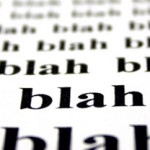A few days ago my wife and I watched ourselves on the big screen. I recently shared a documentary that was made about us, and that documentary was entered into the Lancaster County Community Foundation’s 5-Minute Film Festival where it won second place. (Congratulations to Alexander Monelli!) As a winning entry, it was then shown at Zoetropolis (a local art house and theatre), along with other top entries.
There were quite a few great submissions, ranging from student work to professional films. And I was reminded again of the value of storytelling. Our lives, our cultures, and our entertainment all revolve around stories. To illustrate this point, the first place film did not follow the two guidelines for the competition. Submissions were to be about Lancaster County and they were to be under five minutes. This video was neither. But it had such a great story that the judges rewarded it with top honors. I may have done the same. We love a good story!
When it comes to design, we deal with the elements and principles of design: line, color, balance, space, etc. These are used to create a finished piece that is pleasing to the eye. And part of the goal is make the viewer’s eye move in a certain way across the page. You may want him to immediately see your large, bold title, only to subsequently notice the smaller qualifying type above and below it. You may use lines of text set at various angles, all moving the eye toward a meaningful image. When building a web page, you don’t want the user to simply be bombarded with a list of options. You want to first engage them visually by communicating a feel, a message, a brand—and then lead them to a list of options.
There’s a sequence of events happening. It’s a story! And those design elements and principles are the main players. It’s a fun way to approach an age-old concept, and a reminder that even the most mundane of design projects tell a story in one way or another. Which way is up to you. The message, the punchline, the call to action—these are the all-important takeaways. But like a good joke, how you get to the punchline determines its effectiveness. The more you engage your audience, the more effective your design. And what’s more engaging than a story?



